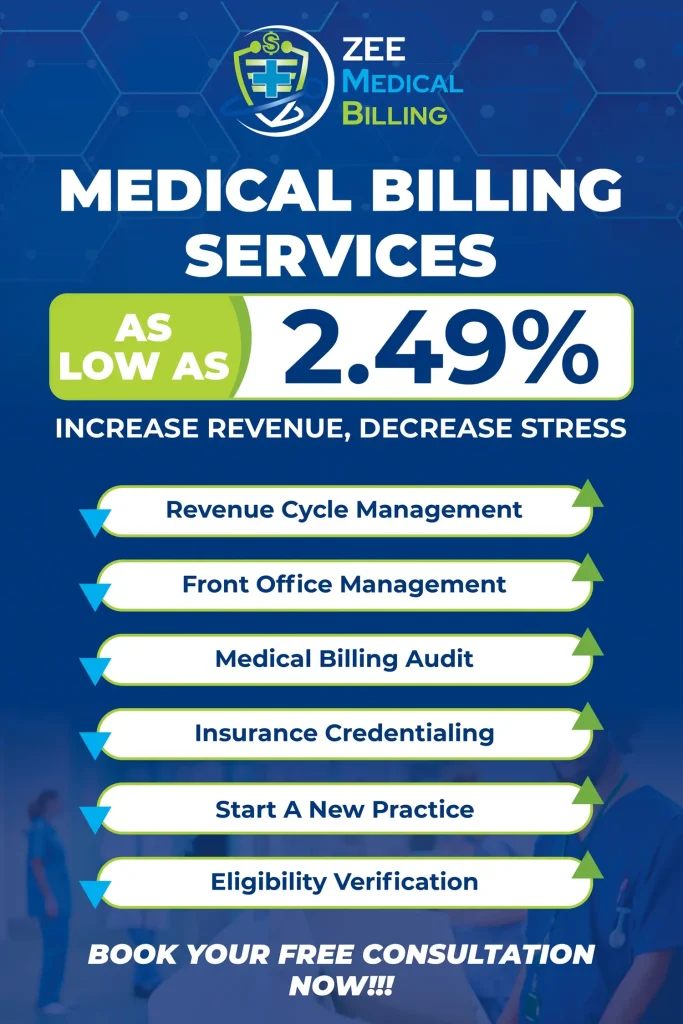Healthcare Revenue Cycle Management (RCM) is a basic part of the healthcare industry, guaranteeing that suppliers are adequately repaid for services delivered. However, the intricacy of dealing with the income cycle frequently prompts various difficulties. The following are a few common issues faced by healthcare services:
1. Inefficient Patient Registration and Eligibility Verification
Errors during patient enrollment, for example, mistaken individual data or insurance details, can cause guarantee refusals or delays in installment. Confirming insurance eligibility upfront is fundamental but frequently overlooked because of time constraints or system shortcomings.
Read More: How to Measure the Effectiveness of RCM in Healthcare
2. Coding and Billing Errors
Precise medical coding is imperative for appropriate repayment. Errors like incorrect or incomplete coding, copy charging, or misclassified services can prompt case denials or underpayment. Normal preparation and updates for coding staff are critical to moderating this issue.
3. Absence of Coordination Between Departments
Disjointed communication and work processes between regulatory, clinical, and billing divisions can bring about information storehouses. This absence of combination frequently causes discrepancies in persistent records, delayed billing, and expanded claim rejections.
4. Guarantee Denials and Rejections
Guarantee denials are one of the main difficulties in RCM. Common reasons incorporate missing data, eligibility issues, and non-compliance with payer rules. Without a robust denial management process, these dismissals can seriously influence income.
5. Delayed Payments
Payment delays can happen because of inefficiencies in the billing system, payer backlogs, or patient non-payment. These delays strain the organization’s financial health, making it harder to maintain functional productivity.
6. Inadequate Use of Technology
Numerous medical services suppliers depend on obsolete systems that need robotization and analytics capabilities. Current RCM solutions with features like automated claim submission, ongoing eligibility checks, and information examination can smooth out activities and lessen mistakes.
7. Patient Payment Challenges
With the rise of high-deductible health plans, patients are liable for more medical care costs. Gathering patient payments can be testing, especially if there is no reasonable communication about costs upfront or, on the other hand, if payment choices are limited.
8. Regulatory Compliance
The medical services industry is liable to steadily evolving guidelines, such as those connected with the Health Insurance Portability and Accountability Act (HIPAA) and value-based care models. Remaining consistent while dealing with the income cycle adds another layer of complexity.
9. Staff Turnover and Training
High turnover rates in administrative and billing staff can disturb the continuity of RCM processes. Moreover, lacking training leads to errors in charging and coding, further exacerbating revenue loss.
10. Absence of Performance Monitoring
Numerous organizations neglect to monitor key performance indicators (KPIs), such as guarantee denial rates, days in accounts receivable (AR), and net collection rates. Without following these measurements, recognizing inefficiencies, and executing corrective measures is testing.
Read More: RPA and Its Role in Revenue Cycle Management
Methodologies to Overcome RCM Challenges
- Implement a Robust Patient Registration Process: Use technology to confirm insurance eligibility and gather accurate patient data.
- Invest in Training and Education: Routinely update staff on coding standards, payer arrangements, and compliance requirements.
- Adopt high-level RCM technologies: Influence software solutions with automation and examination to streamline workflows and further develop exactness.
- Strengthen Denial Management: Foster a precise way to deal with recognizing, dissecting, and addressing claim denials quickly.
- Enhance Patient Correspondence: Obviously make sense of expenses, installment choices, and protection inclusion to patients to diminish disarray and further develop assortments.
- Monitor KPIs: Track and break down income cycle measurements to recognize patterns and regions for development.
By resolving these common issues and carrying out essential arrangements, medical services associations can streamline their income cycle, work on financial performance, and focus on conveying quality patient consideration.









